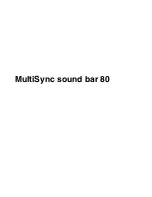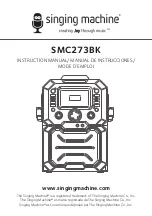
8
WWW.FORNEYIND.COM
• Keep cylinders away from areas where they may be subjected to physical damage or accidentally struck. Keep
them a safe distance from any source of flame, sparks, or heat.
• Do not weld or cut in an area where the air may contain flammable dust (such as grain dust), gas, or liquid
vapors (such as gasoline).
• Do not handle hot metal, such as the workpiece or electrode stubs, with bare hands.
• Wear leather gloves, heavy long sleeve shirt, cuff-less pants, high-topped shoes, helmet, and cap. As necessary,
use additional fire-resistant protective clothing to cover and protect the upper and lower body. Hot sparks or
metal can lodge in rolled up sleeves, pant cuffs, or pockets. Sleeves and collars should be kept buttoned and
pockets eliminated from the shirt front.
• Have fire extinguisher equipment handy for immediate use. A portable chemical fire extinguisher, type ABC, is
recommended.
• Wear ear plugs when welding overhead to prevent spatter or slag from falling into ear.
• Make sure welding area has a good, solid, safe floor, preferably concrete or masonry, not tiled, carpeted, or
made of any other flammable material.
• Protect flammable walls, ceilings, and floors with heat resistant covers or shields.
• Check welding area to make sure it is free of sparks, glowing metal or slag, and flames before leaving the
welding area.
• Wear garments free of oil or other flammable substances such as leather gloves, thick cotton shirts with no
synthetic materials, cuff-less trousers, closed toed shoes. Keep long hair pulled back.
• Remove any combustibles such as lighters and matches before doing any welding.
• Follow requirements in OSHA and NFPA for hot work and have an extinguisher nearby.
High Frequency Radiation
• High Frequency (H.F) can interfere with radio navigation, safety services, computers and communication
equipment.
• It is the user’s responsibility to have a qualified electrician promptly correct any interference problem resulting
from the installation. Electrician should regularly check and maintain installation.
• Stop using the equipment if notified by the FCC about interference.
• Keep H.F. source doors and panels tightly shut and keep spark gaps at correct setting.
Arc Welding
•
Computers and computer driven equipment can be harmed with electromagnetic energy.
•
Be sure all equipment is compatible with electromagnetic energy.
•
Keep welding cables short to reduce interference.
•
Follow manual to install and ground machine.
•
If interference continues, shield the work area or move the welding machine.
WARNING: ELECTRIC SHOCK CAN KILL!
To reduce the risk of death or serious injury from shock,
read, understand, and follow the safety instructions. In addition, make certain that anyone else who uses this
welding equipment, or who is a bystander in the welding area understands and follows these safety instructions as
well.
IMPORTANT! TO REDUCE THE RISK OF DEATH, INJURY, OR PROPERTY
DAMAGE, DO NOT ATTEMPT OPERA TION
of this welding equipment until you have read and
understand the following safety summary.
• Do not, in any manner, come into physi cal contact with any part of the welding current circuit. The welding
current circuit includes:
a. the workpiece or any conductive material in contact with it,
b. the ground clamp,
c. the electrode or welding wire,
d. any metal parts on the electrode holder, or MIG gun.
• Do not weld in a damp area or come in contact with a moist or wet surface.
• Do not attempt to weld if any part of clothing or body is wet.
• Do not allow the welding equipment to come in contact with water or moisture.
Electric Shock









































